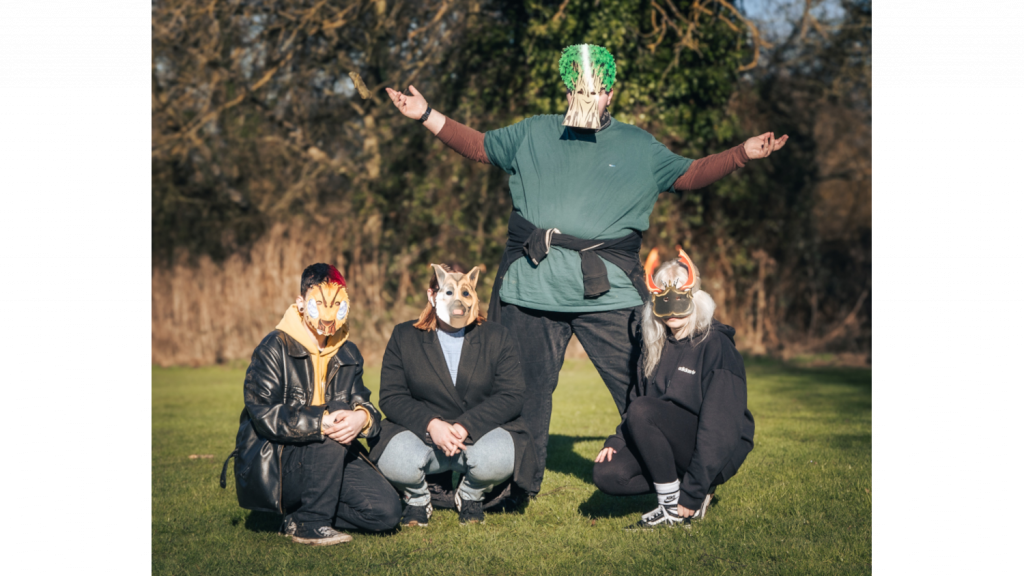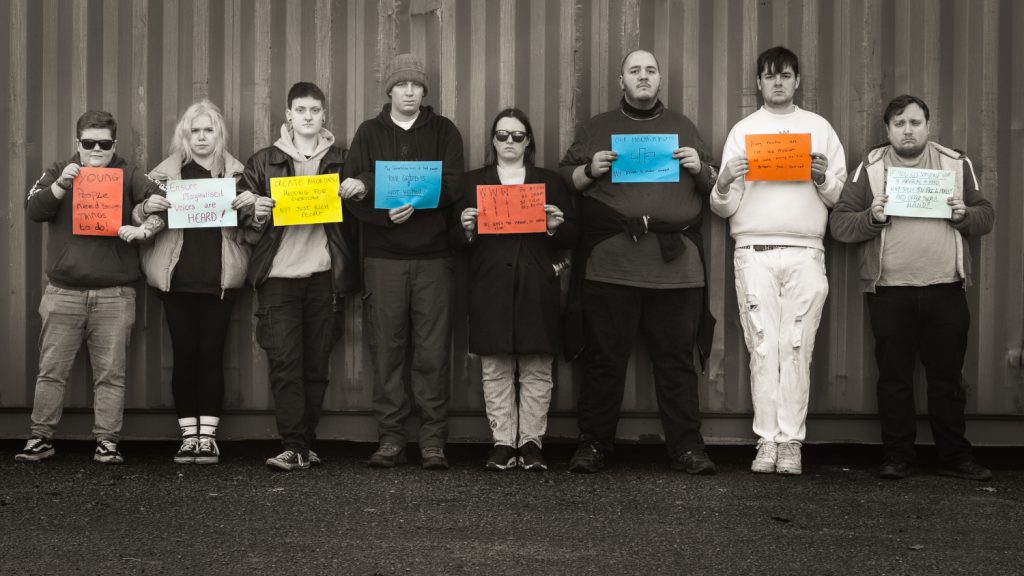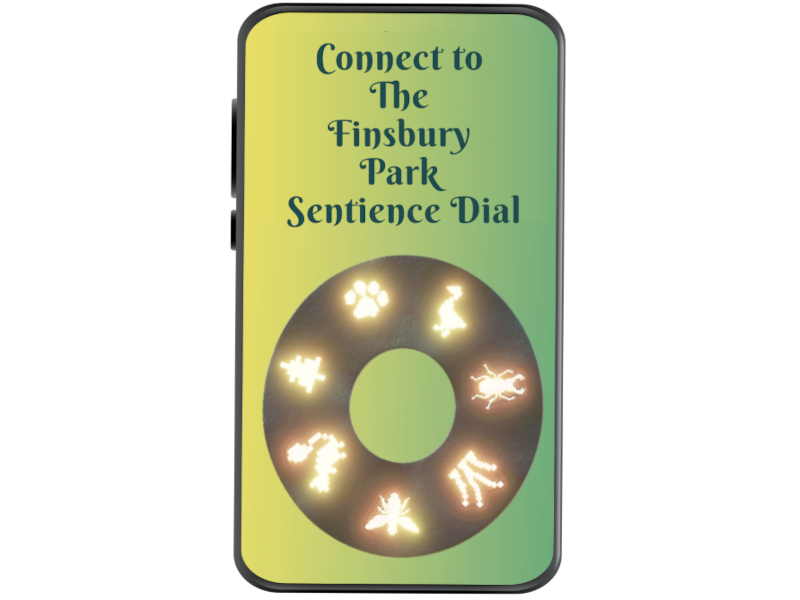



For 30 years, Furtherfield has pioneered the critical imagination of art, technology, and networked cultures. In this time dominant global actors have created and imposed systems that support contemporary life for some at the same time as poisoning our planetary-wide environment and societies at an escalating rate. There is an urgent need to adopt the principles of less, again and differently, in a fair and equitable way. Seeking to cause less harm. Acting again on the knowledge that has been available (if ignored or downplayed) for decades. Acting differently in response to emerging knowledge, ways of knowing, being and feeling. Understanding our work in this way, how it exists within a living system, is one way of accepting how we are all material beings situated within vast chains of consequence, enmeshed within larger ones. This requires a different standard of responsibilities, a way to be responsive and accountable in a changing world working to address the uneven impacts on people, creatures, and places that may be geographically remote from us, but which nevertheless bear the cost of our actions.
In 2025 we shift the main focus of our work from our long-standing gallery in Finsbury Park, North London to a mid-sized town on Suffolk’s East coast. With a population of 24,000, Felixstowe town is our new home, where we will join existing communities, cultural partners, ecosystems, and species. This transition is a modal shift for the organisation and means we are doing things differently. In Felixstowe, we begin a new journey of becoming an embedded and community-needs-led art organisation focused on art, technology, and eco-social change. Eco-social change is systemic transformation, integrating social justice and ecology— to create fairer, more resilient futures for all.
With this move we commit to being in relation to communities, contexts, and biodiverse regions that are entirely new to us. In creating this policy we hope not only to “move to” but to “move with” our new location, developing different relationships with ourselves, each other, and the land, at the same time composting and letting go of existing practices and connections that harm. This environmental action plan therefore refers to listening, learning, flexibility, agility, stamina, synchronisation, and interpersonal mobility that will be required.
Our first environment action is to sign up to Culture Declares Emergency. Our second has been to develop an environmental policy for the next three years. Our third will be to make two climate pledges by the end of year one.
“We declare that the Earth’s life-supporting systems are in collapse, threatening biodiversity and human societies everywhere.
Alive to the beauty of our planet, we unite to challenge the dominant global power structures that fail to protect us as they disregard scientific consensus, silence marginalised voices and perpetuate ecocide.
As Declarers, we take action to harness the power of arts and culture to express heartfelt truths and address deep-rooted injustices, to care for and create adaptive, resilient and joyful communities, and to influence the urgent and necessary transformation of harmful global systems.”
On creating this policy, we :
In this new phase, we are committed to
Research shows that young people worldwide are deeply concerned about the climate crisis and biodiversity loss. As the generation that will be most affected, they have the power to drive change—spreading new habits, attitudes, and technologies. However, they also face significant barriers to meaningful action.
What is Felixstowe Youth VOICE?
Felixstowe Youth VOICE is a series of creative workshops co-produced by Furtherfield and young people (18-30 years) from the Felixstowe Peninsula. Through art, storytelling, and collaboration, we explore how creative practices can empower young people to lead positive eco-social change and contribute to the UN Sustainable Development Goals (SDGs).

In these workshops, we:
🐝 Step into the worlds of local species through experimental role-play, discovering what truly matters to them.
⚖️ Unpack the justice issues behind the Earth crisis, from climate collapse to species extinction.
🌾 Turn insight into action, exploring meaningful ways to create change—for ourselves and the ecosystems we depend on.
Together, we aim to
🧭 Explore artistic methods and creative ways of taking environmental action.
🤝 Come together as a community to shape a better future.
📣 Make sure young voices are heard and take an active role in decisions that impact our planet.
💡 Empower young people to improve and create real change in the places they love.

We have been exploring how artistic methods developed by artists in Furtherfield’s community can support environmental actoin:
Multispecies role-play was developed with artists, biodiversity experts and park lovers as part of the 5 year project, The Treaty of Finsbury Park. The Hologram, is a feminist peer-to-peer healthcare system, that was initially developed by artist Cassie Thornton at Furtherfield and is now practiced by thousands of people around the world.
Organising Team: Courtney Hessey, James Garden, Lauren Bruen, and Ruth Catlow
Co-production Team: Alexander Fotheringham, Cameron Sawyer, Jamie Lea , Katie Clark, Luke Winston, and Mark Richards
Film, animation and illustration by James Garden
Photography by Chris Clayton
Part of a European Research Initiative
Felixstowe Youth VOICE is part of VOICE a European research project examining how artist-led innovation and citizen engagement can help achieve the UN SDGs. In Summer 2025, the team will showcase creative media, tools, and learnings in an exhibition in Felixstowe.
Partners & Support
Special thanks to Laura Locke at the Felixstowe Wellbeing Hub, and Level 2 Youth Projects, Felixstowe for their partnership.
This work was realised within the framework of the VOICE project at Waag Futurelab with support from the Horizon Programme of the European Union.
Part of The Treaty of Finsbury Park 2025
The Treaty of Finsbury Park 2025 is an immersive fiction that looks at what it would be like if other species were to rise up and demand equal rights with humans. For 5 years human park-lovers have taken part in this fiction by playing for and as another species (so, like, NOT as a human ok?!).
From October 2024, you can scan the hoardings that wrap Furtherfield Gallery in Finsbury Park to watch highlights from the 2023 Interspecies Festival. You can also access the the magical Finsbury Park Sentience Dial app to make a pledge that advances interspecies justice and blooming biodiversity!
Now you can be among the first to pledge your support for a cooperation agreement between ALL living species in Finsbury Park.

Biodiversity is crucial in reducing the harmful effects of climate change, and city parks have a huge part to play. But it’s not all about us humans! Think like a dog, bee or even grass and help change the way we all see and participate in our local urban green spaces forever! It’s time to spark new ways of being, feeling and acting together!
Will you…
⏳ Saturday 28 and Sunday 29 September 2024
🏡 Furtherfield Gallery, at the McKenzie Pavilion, Finsbury Park, London N4
🐕🌳Exhibition and Treaty Signing activities 11 – 4pm
🎟️🐿️ Multi-species Meditation sessions – DAILY at 11am, 2pm and 3pm.
Join us for fun with family and friends in Finsbury Park to connect with park life in fantastical new ways.
🎟️🐿️ Book your free place for a Multi-species Meditation session led by Scirius the cockney squirrel, played by Human artist Max Dovey. Use your imagination to transform into another species with a totally different sense of what is important. Sessions daily at 11am, 2pm and 3pm.
🌳Use the magical new Finsbury Park Sentience Dial app to tune into all flora and fauna! Scan the park and meet up to 7 local park species representatives, then make your pledge for bountiful biodiversity!
⇨ Watch Tracy Kiryango’s short docu-fiction film The Interspecies Festival of Finsbury Park 2023 celebrating the cultures and talents of ALL Finsbury Park’s species, and using camera, lighting and post-production effects to convey multi-species-perspectives of the festival events.
⇨ Join the Multisensory Mystery Tour to see, hear and smell the old forest through the sensory superpowers of squirrels, trees, and dogs…
⇨ Hear the squeaks, squawks, howls and honks of the Multispecies Choir and their “songs” of lament, celebration and protest…
⇨ Sample delicacies from Pass-The-Poop-Parcel, the multi-species gastronomy game…
Help shape the first-ever interspecies treaty of cooperation for bountiful biodiversity!
Don’t worry! From October 2024, you can scan the hoardings that wrap Furtherfield Gallery in Finsbury Park to watch highlights from the 2023 Interspecies Festival. You can also access the the magical Finsbury Park Sentience Dial app to make a pledge that advances interspecies justice and blooming biodiversity!
The Treaty of Finsbury Park 2025 depicts the story of the dawning of interspecies democracy. It’s a new era of equal rights for all living beings, where all species come together to organise and shape the environments and cultures they inhabit – in Finsbury Park, and urban green spaces across the UK, the world, and beyond!
Based around a set of live action role play games – or LARPs – the Treaty of Finsbury Park 2025 is played from more-than-human perspectives to encourage the blooming of a bountiful biodiversity and interspecies political action.
Like many urban parks, Finsbury Park is fraught with environmental issues from noxious gases and traffic noises to governance struggles and financial sustainability. The pledges are based on research collaborations and prioritised with participants. Find out more about the story so far, the research, and the importance of biodiversity in urban green space by visiting our FAQs.
The Treaty of Finsbury Park 2025 is a major collaborative project led by Furtherfield, exploring new ways to build empathy pathways to non-human lifeforms through play.
It represents a major undertaking to do long-term work exploring how an arts organisation based in the heart of an urban green space can support a deeper understanding of that green space and ALL its inhabitants. Beginning in 2020 and spanning a minimum of 5 years, the work was originally developed in collaboration with The New Design Congress. The first 3 years are being supported by CreaTures (Creative Practices for Transformational Futures). CreaTures project received funding from the European Union’s Horizon 2020 research and innovation programme under grant agreement No. 870759. The content presented represents the views of the authors, and the European Commission has no liability in respect of the content.
View full credits